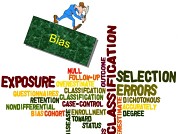Ambiguities in scientific terms: The use of "error" and "bias" in statistics
DOI:
https://doi.org/10.25260/EA.18.28.3.0.680Abstract
The proper use of statistics is key for professionals who answer questions from data, including ecologists. However, statistics is generally confusing for these professionals, in part due to difficulties related to its terminology. Many of these difficulties derive from the multiple meanings that a term has, both inside and outside the statistical scope. For Spanish-speaking professionals, the translation of English terms also contributes to this confusion. In this paper we show (and intend to clarify) some of these problems from two key terms of an introductory statistics course: error and bias. These terms are discussed in the different contexts that involve problem resolution using statistics: sampling, measurement, estimation, inference and prediction. Error is inherent to statistics and is used to quantify different types of variability or to indicate the possibility of making mistakes on decision making, depending on the context. On the other hand, bias reflects the tendency towards certain values and/or elements, and leads to erroneous conclusions if not avoided. We propose that the problems associated with lexical ambiguity should to be addressed from university teaching and based on this, we offer some recommendations. Thus, the present article not only offers a guide for professionals to make an adequate use of some statistical terms but also provides a contribution for teaching.
https://doi.org/10.25260/EA.18.28.3.0.680
References
Anderson, D. R., D. J. Sweeney, and T. A. Williams. 2008a. Estadística para administración y economía. 10ma edición. Thomson South-Western, Ohio.
Anderson, D. R., D. J. Sweeney, and T. A. Williams. 2008b. Statistics for Business and Economics, Tenth Edition. Thomson South-Western, Ohio.
Barwell, R. 2005. Ambiguity in the mathematics classroom. Language and Education 19(2):118-126.
Batanero, C., J. D. Godino, and R. Roa. 2004. Training Teachers to Teach Probability. Journal of Statistic Education 12(1). URL: ww2.amstat.org/publications/jse/v12n1/batanero.html.
Bolker, B. 2008. Ecological models and data. Princeton University Press, Princeton.
Choi, B. C. K., and A. W. P. Pak. 2005. Bias, overview. Encyclopedia of Biostatistics. 1.
Garfield, J. 1995. How Students Learn Statistics. International Statistical Review 63(1):25-34.
Garfield, J., and A. Ahlgren. 1998. Difficulties in Learning Basic Concepts in Probability and Statistics: Implications for Research. Journal for Research in Mathematics Education 19(1):44-63.
Garfield, J., and D. Ben-Zvi. 2007. How Students Learn Statistics Revisited: A Current Review of Research on Teaching and Learning Statistics. International Statistical Review 75(3):372-396.
Garibaldi, L. A., F. Aristimuño, F. Oddi, and F. Tiribelli. 2017. Inferencia multimodelo en ciencias sociales y ambientales. Ecología Austral 27:348-363.
Hand, D. J. 1994. Deconstructing Statistical Questions. Journal of the Royal Statistical Society. Series A (Statistics in Society) 157(3):317-356.
Hogg, R. V. 1991. Statistical Education: Improvements Are Badly Needed. The American Statistician 45(4):342-343.
Kaplan, J. J., D. G. Fisher, and N. T. Rogness. 2009. Lexical Ambiguity in Statistics: What do students know about the words association, average, confidence, random and spread? Journal of Statistics Education 17(3). URL: www.amstat.org/publications/jse/v17n3/kaplan.html.
Kaplan, J. J., D. G. Fisher, and N. T. Rogness. 2010. Lexical Ambiguity in Statistics: How students use and define the words: association, average, confidence, random and spread. Journal of Statistics Education 18(1). URL: www.amstat.org/publications/jse/v18n2/kaplan.html.
Lavy, I., and M. Mashiach-Eizenberg. 2009. The Interplay between Spoken Language and Informal Definitions of Statistical Concepts. Journal of Statistics Education 17(1). URL: www.amstat.org/publications/jse/v17n1/lavy.html.
Lawson, J. 2010. Design and Analysis of Experiments with SAS. Champman and Hall, CRC Press, Boca Raton.
Menditto, A., M. P Patriarca, and B. Magnusson. 2007. Understanding the meaning of accuracy, trueness and precision. Accreditation and Quality Assurance 12(1):45-47.
Porter, T. M. 1986. The Rise of Statistical Thinking. Princeton University Press, New Jersey.
Rabinovich, S. G. 2006. Measurement errors and uncertainties: theory and practice. Springer, New York.
Richardson, A. M., P. K. Dunn, and R. Hutchins. 2013. Identification and definition of lexically ambiguous words in statistics by tutors and students, International Journal of Mathematical Education in Science and Technology 44(7):1007-1019.
Sackett, D. L. 1979. Bias in analytic research. Journal of Chronic Diseases 32:51-63.
Sokal, R. R., and F. J. Rohlf. 2002. Introducción a la Bioestadística. Reverté S.A., Barcelona.
Stigler, S. M. 1986. The History of Statistics. The Measurement of Uncertainty before 1900. Harvard University Press, Cambridge.
Van Weijen, D. 2012. The Language of (Future) Scientific Communication. Research Trends 31. URL: www.researchtrends.com/issue-31-november-2012/the-language-of-future-scientific-communication.
Walther, B. A., and J. L. Moore. 2005. The concepts of bias, precision and accuracy, and their use in testing the performance of species richness estimators, with a literature review of estimator performance. Ecography 28:815-829.

Downloads
Additional Files
Published
How to Cite
Issue
Section
License
Copyright (c) 2018 Facundo J. Oddi, Francisco J. Aristimuño, Carolina Coulin, Lucas A. Garibaldi

This work is licensed under a Creative Commons Attribution 3.0 Unported License.
Authors retain their rights as follows: 1) by granting the journal the right to its first publication, and 2) by registering the published article with a Creative Commons Attribution License (CC-BY 4.0), which allows authors and third parties to view and use it as long as they clearly mention its origin (citation or reference, including authorship and first publication in this journal). Authors can make other non-exclusive distribution agreements as long as they clearly indicate their origin and are encouraged to widely share and disseminate the published version of their work.


